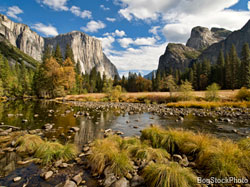(ARA) – The Roosevelt Arch at the North Entrance of Yellowstone National Park features a placard that reads, “For the Benefit and Enjoyment of the People,” words that Pres. Theodore Roosevelt proclaimed as the arch was dedicated in 1903. Yet, many people of color have not had the opportunity to experience our country’s national parks – their national parks.
Just recently, The Oprah Winfrey Show chronicled Oprah’s camping trip to Yosemite National Park. Oprah was invited to the park by Yosemite National Park Ranger Shelton Johnson, an African American who played a prominent role in Ken Burns’ film, The National Parks: America’s Best Idea.
While visiting Yosemite, Oprah took in the Mariposa Grove of Giant Sequoias, went fly fishing on the Merced River, and was awed by Johnson’s incredible Buffalo Soldier persona. But, for Oprah, this place of inspiration raised a much larger question: “Why aren’t there more visitors of color in the national parks?”
The lack of diversity is a longstanding issue for national parks, public lands and the environmental movement as a whole. At Yosemite, less than 1 percent of the visitors are African American. In Florida, only 4 percent of visitors to Everglades National Park are Hispanic or African American – even though nearby Miami is 54 percent Hispanic and 14 percent African American. As the demographics of America continue to shift toward a non-white majority, visitation numbers like these diminish the relevancy of parks.
The National Parks Second Century Commission, an independent group charged with developing a 21st century vision for the National Park Service, recently laid out potential Park Service actions to better connect diverse and urban communities with the national parks. The commission recommended engaging diverse communities to build personal connections to parks, expanding educational opportunities, ensuring interpretation through the context of diverse perspectives, and actively recruiting a new generation of park leaders that reflects the nation’s diversity.
Although more widely known for the great natural parks, like Yellowstone, and Glacier, the National Park Service is one of the largest stewards of sites that tell the story of cultural diversity. At Harpers Ferry National Historical Park, W.E.B. DuBois and other members of the Niagara Movement issued a clarion call for full and immediate suffrage. San Antonio Missions National Historical Park preserves four Spanish missions in Texas – the greatest concentration of Roman Catholic missions in North America. Even Yosemite, one of the majestic natural parks, holds a rich and diverse history – home to Shelton Johnson’s interpretation of Buffalo Soldiers at the park.
Despite this rich history, national parks across the country face funding and staffing shortfalls that often limit the Park Services’ ability to interpret cultural sites and expand educational opportunities for visitors to learn about our shared heritage. While outreach to diverse communities is a stated priority for the Park Service, they often lack the funding and staff to do so.
There is currently an opportunity to ensure that our national parks remain relevant to a changing America. Pres. Barack Obama recently established the America’s Great Outdoors initiative to create a 21st century strategy for reconnecting Americans with their rich natural heritage. The National Parks Conservation Association, a nonprofit advocacy organization for the parks, has recommended that national parks play a prominent role in such an initiative.
“Many urban and rural communities have national parks in their backyards and we must ensure that all Americans have the opportunity to experience these places that preserve our natural and cultural heritage,” says NPCA Legislative Representative Alan Spears. “We hope that the administration takes bold steps to better connect people of color to our national parks through the America’s Great Outdoors initiative.”
Throughout the country, there are successful models of outreach to urban and diverse communities around national parks. For example, at Santa Monica Mountains National Recreation Area in Los Angeles, nearly 10,000 inner-city youth have learned to grow native plants and care for restoration sites. Santa Monica Mountains is the world’s largest urban national park and although the park is within walking distance, most children in the year-long learn and work program had never visited before. Since the program, visitation has increased as students bring their families for weekend and after-school visits – creating a lasting connection to a place that once barely existed to them.
Oprah’s visit to Yosemite National Park brings to the forefront a longstanding issue for national parks. By increasing diversity in the workforce, interpretation and ultimately visitation, parks can maintain relevancy in their second century and truly provide benefit and enjoyment for all Americans.

